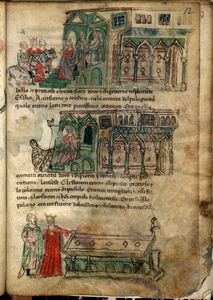Berlinka: a unique history of Europe in Kraków
The researchers from the Jagiellonian University have completed their research on Romance-language manuscripts that belong to the famous German collection of historic material – the so-called Berlinka - kept in the Jagiellonian Library in Krakow.
The findings of the research have been keenly watched by the international academic community. The most interesting discoveries include, inter alia, some number of medieval medical manuscripts written in Italian, which have never been published before, and an 18th century Spanish Guarani language textbook, written by a Jesuit missionary. Guarani is a native South American language still used by Indians in Paraguay.
The research team, led by Dr hab. Piotr Tylus, has also published three unique books on old manuscript studies. Especially one of them, Co mówią stare rękopisy (What the old manuscripts tell us) aroused great international interest, which culminated in the Canadian medievalists' request to translate it into French.
The dispute over Berlinka
Berlinka collection contains about 500 thousand items, including many invaluable treasures of European culture, such as the manuscripts of Boccaccio, Giordano Bruno, Martin Luther and the scores of Mozart's and Bach's works. The collection was brought to Krakow after the Second World War, when a monastery where it was kept became part of the Polish territory. Earlier, the Germans had moved the collection from the Prussian State Library in Berlin to protect it from Allied bombings.
The Polish-German dispute over Berlinka has been going on since the Second World War, even though under the Polish law the collection belongs to the Polish State Treasury. Due to this complicated situation, the collection has not been thoroughly explored yet. However, the scholars from the JU Institute of Romance Studies have recently undertaken part of this challenging task.
A history of Europe in a nutshell
These old yellowed pages contain not only many interesting, sometimes previously unknown, texts, but also the fascinating history of their creation and preservation. "We have identified the texts, determined where and when they were created and what was their history. These are the most important, general facts that had to be figured out," said Piotr Tylus.
The cover, the paper or parchment, the shape of letters, illuminations, initials, and many other elements tell much about the history of a given item, including even its past owners. It is like a history of Europe in a nutshell.
Lovers of old books
The Polish scholars are among the world-renowned experts in the field. They participate in many prestigious meetings, such as the last year's Congress of the International Association of Bibliophiles in Krakow and Warsaw. The Jagiellonian University researchers invite all persons interested in historic manuscripts to read about the research at info.filg.uj.edu.pl/fibula/.
Published by: Łukasz Bieńkowski


